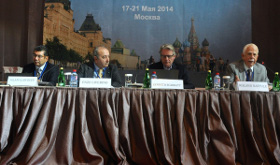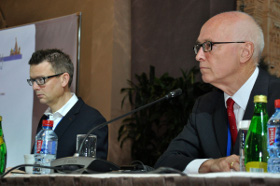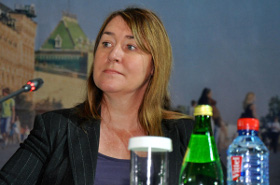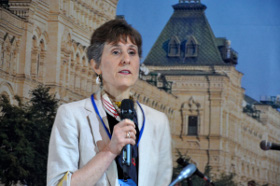Sector A Meeting gives green light to proposal for creation of Coral Commission
CIBJO’s Sector A, which deals in gem materials, has accepted a proposal that a new commission be created, which will deal with issues related to the precious coral industry. The president of the newly created Coral Commission is Enzo Liverino, and he has been charged with creating a Coral Blue Book, which lists acceptable nomenclature, descriptive terms and standards.
Congratulating Mr. Liverino, Sector A President Roland Naftule invited CIBJO members to apply to join the body and contribute to its work.
The efforts of the Precious Stones Multi-Stakeholder Working Group (PS-MSWG) to create new chain of distribution regulations in the jewellery pipeline were widely discussed at the Sector A meeting.
President Roland Naftule said his first reaction upon hearing of the plans of the group was to ask why they were doing it in such a way. “This work should fall under the CIBJO umbrella since we are the representative body of the jewellery industry from across the world. CIBJO should serve as the body facilitating debate, but the PS-MSWG group does not agree.”
“They have their own reasons. They are trying to regulate some functions of the jewellery industry. Many people feel comfortable with their work but many others do not want to be regulated by the government. Some of aspects of their work go too far. There is a lot of concern about what the group is trying to achieve – and I don’t entirely understand their aims myself,” he added.
On other issues, Mr. Naftule said numerous updates of the Diamond, Coloured Stone and Pearl Blue Books had been carried out. As soon as the changes were accepted by the CIBJO Board, the books would be posted to the CIBJO website.
Coloured Stone Commission President Nilam Alawdeen pointed out that CIBJO recognises that its standards are subject to government regulation in the respective jurisdictions of CIBJO members. He proposed that Sector A accept the following wording in its Blue Books: “In the event that there are no government regulations in a member’s country, the local industry rule will take precedence as long as it stronger.”
Photo Caption: Enzo Liverino (second from left), President of the new Coral Commission, during the Sector A meeting in Moscow. He seated with (from left): Nilam Alawdeen, President of the Coloured Stone Commission; Kenneth Scarrat, President of the Perl Commission; and Roland Naftule, Sector A President.






